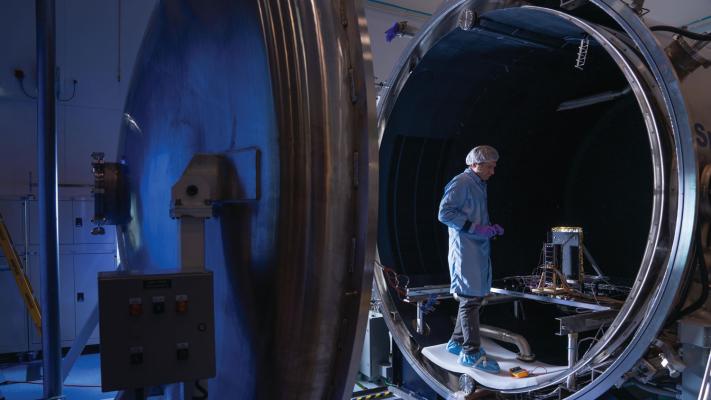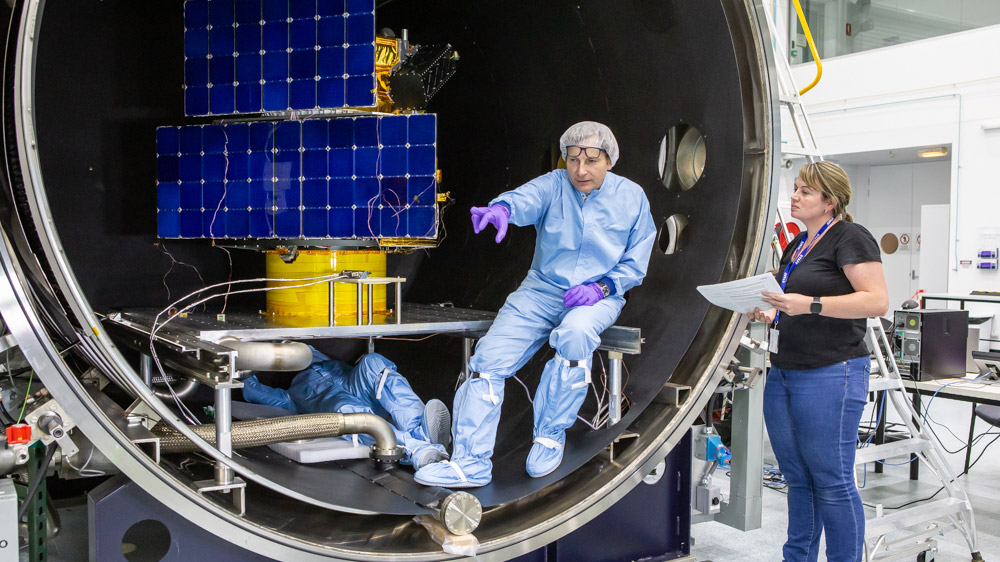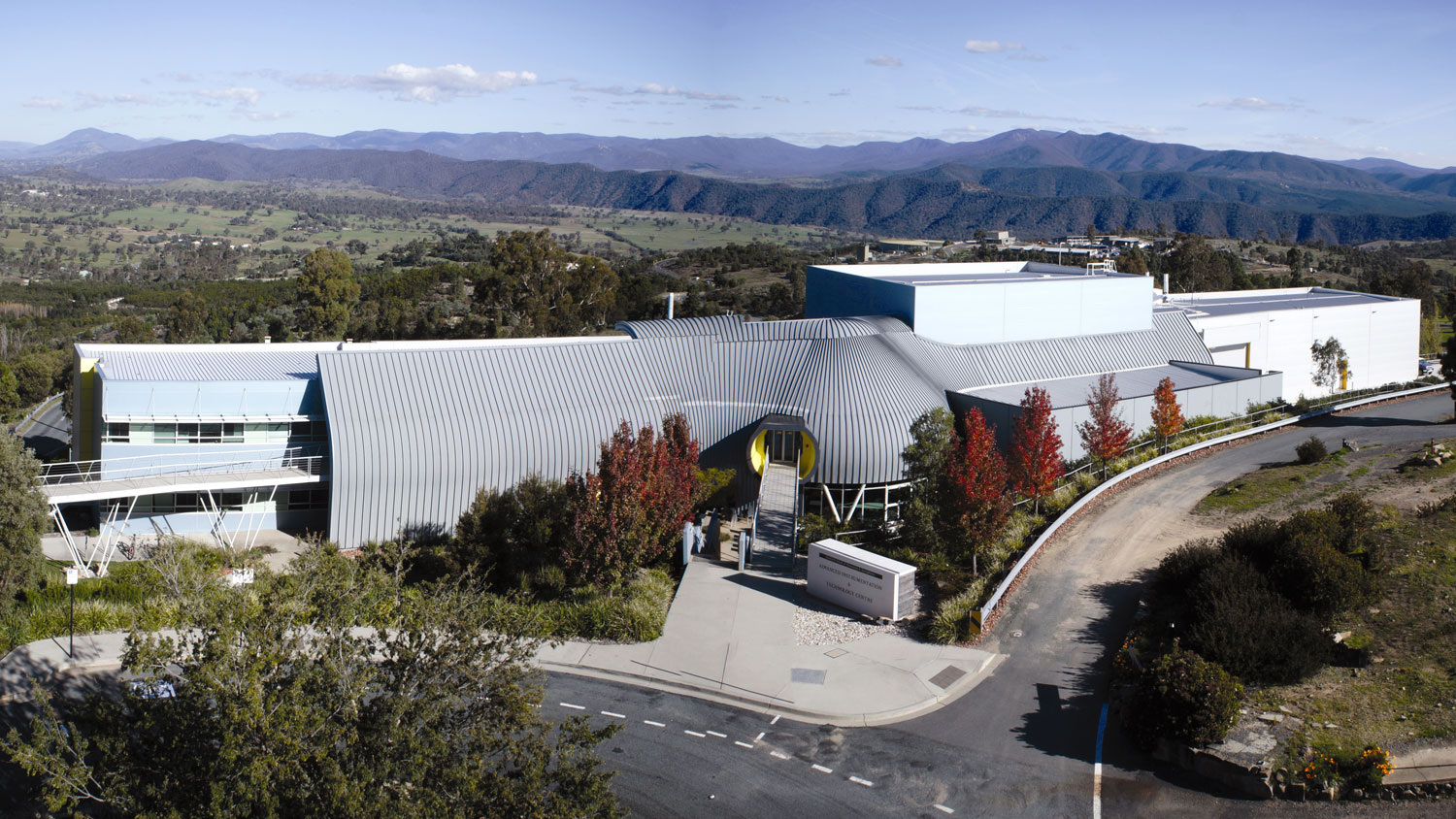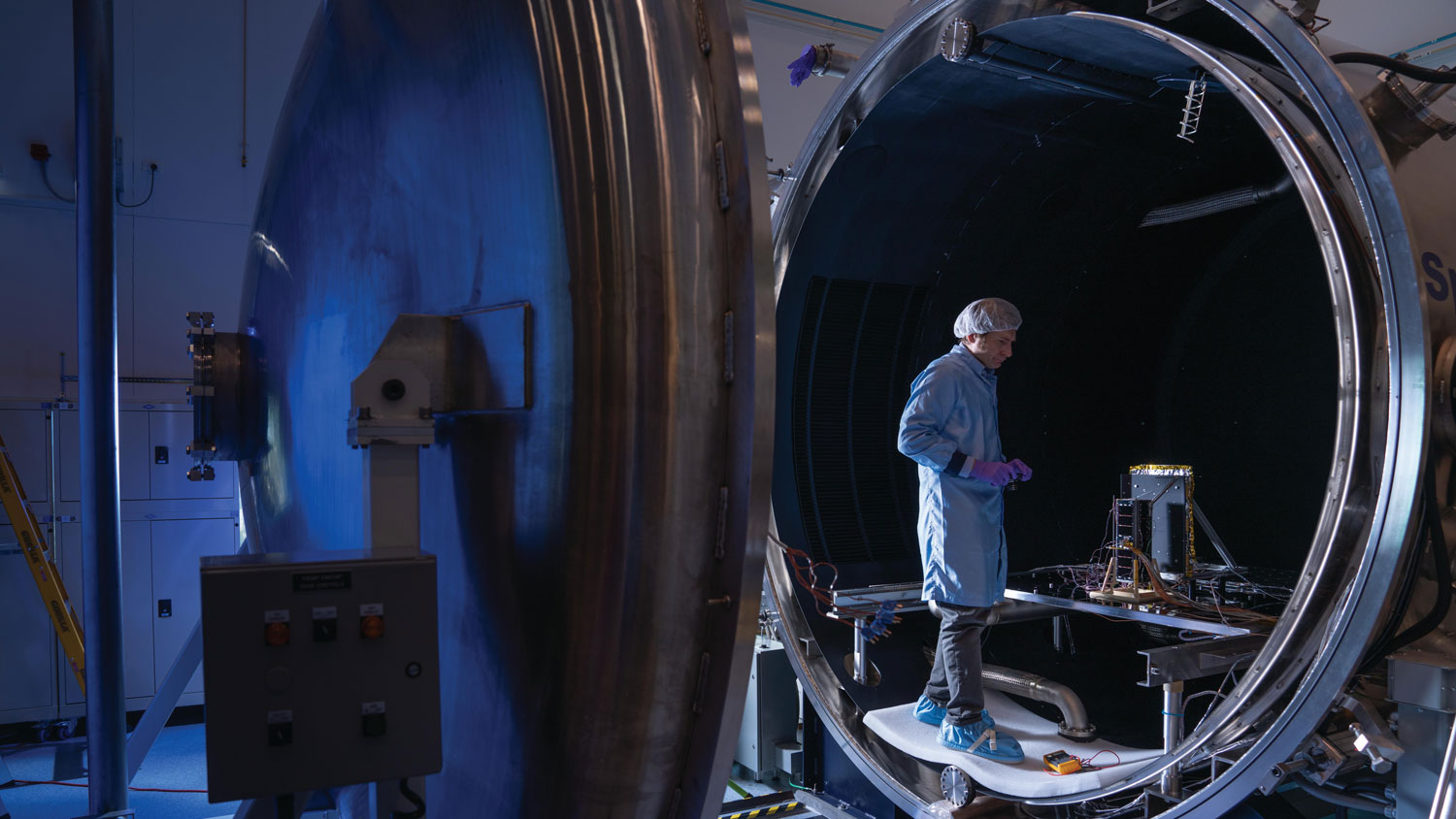When companies launch advanced technology into orbit, you might wonder: how can they be sure it’ll work when it gets up there and first experiences space?
Well, the Australian National University has thought about exactly that – and created the National Space Test Facility (NSTF). With an internationally recognised team, the NTSF conducts research and severe space environmental testing of satellites, payloads, subsystems, and components for major space missions. In the last four years, 19 spacecraft from Australia and New Zealand have launched into orbit after qualification at the NSTF.
The facility is a key national space asset, and we’ve invested in its comprehensive set of testing capabilities through our funding programs. The NSTF’s centrepiece is its vacuum chamber – a 3m diameter cylinder which simulates the airlessness of space for whatever’s sitting inside. During vacuum tests, an infrared thermal imaging system shows how space conditions affect the test subject’s temperature, while a Quartz Crystal Microbalance system checks that the release of gases meets stringent contamination standards. Outside the chamber, another handy apparatus is the pyroshock test facility, which simulates the intense stress waves experienced by spacecraft during launch and separation.
The NSTF is also one of 8 nodes in the Agency-supported National Space Qualification Network (NSQN), a wider group of Australian testing capabilities provided by the Australian National University, ANSTO, Steritech Australia, the University of Wollongong Centre for Medical Radiation Physics, Saber Astronautics, Nova Systems, and Heavy Ion Accelerators. The is making it easier and more affordable for Australian industry and our regional neighbours to qualify their space products.
“The future for this facility looks nice… we do expect more advanced spacecraft, bigger spacecraft, and also more projects coming in.”
~ Eduardo Trifoni, Director, NSTF
Fast facts
Fast facts
- The NSTF offers thermal vacuum, vibration, pyroshock, electromagnetic interference/compatibility, and LEO atomic oxygen interaction testing.
- It also features a large cleanroom for assembly and integration activities.
- The NTSF, and the wider National Space Qualification Network, were supported by Agency grant funding.

Australia’s space infrastructure
As the national space agency, we back the development of state-of-the-art space infrastructure across the country.
All images used in this story are courtesy of The Australian National University





